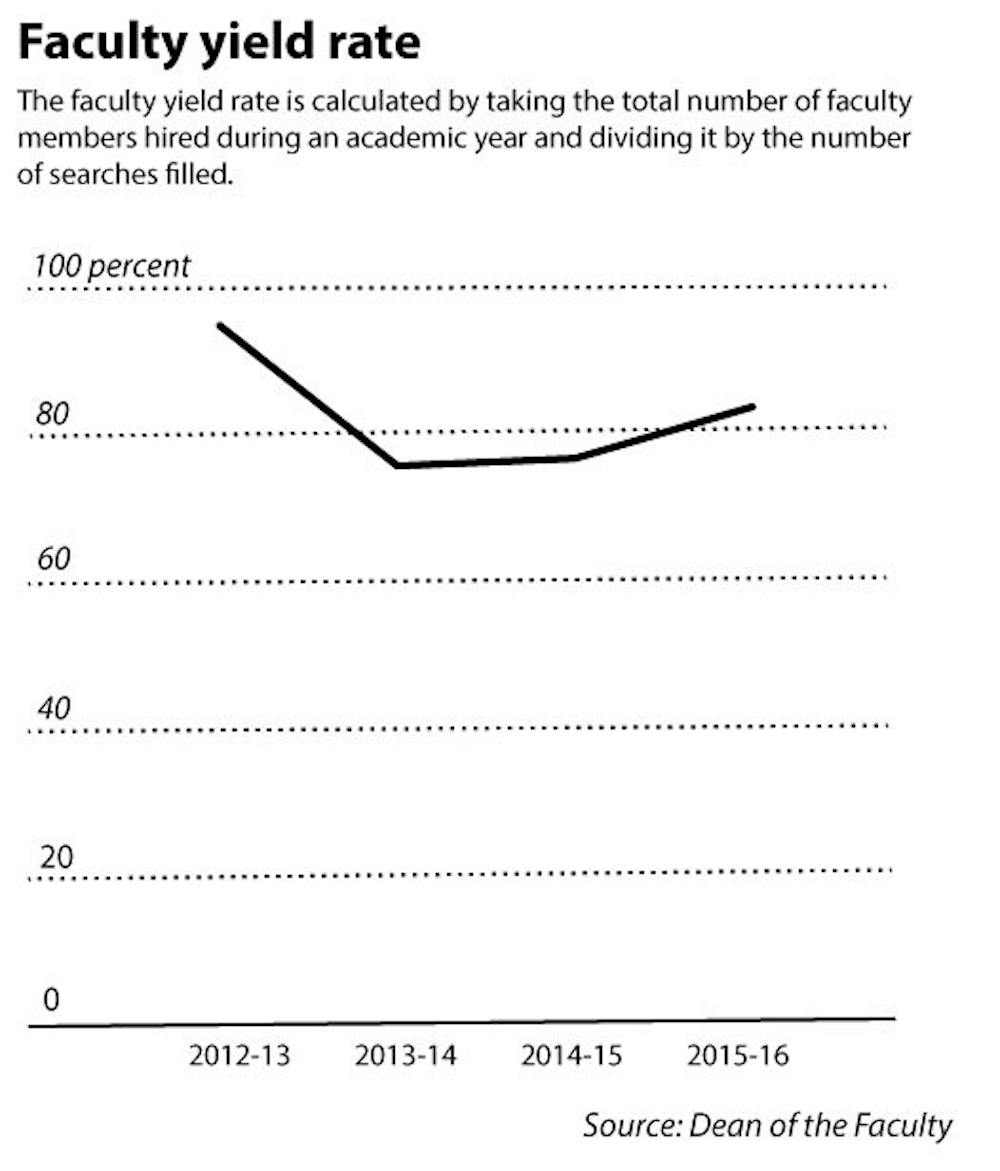Eighty-four percent of potential new faculty members who were offered positions during the 2015-2016 academic year for the following year accepted their offers, said Associate Dean of the Faculty Joel Revill.
This figure, referred to as the faculty yield rate, is calculated by dividing the total number of new faculty members hired by the number of searches that were filled, Revill said. Forty-seven new faculty members were brought on board for the 2016-2017 academic year.
Additionally, 92 percent of hires were the top candidates who applied for their positions, the highest rate since the 2012-2013 academic year, during which 94 percent of new hires were the top candidates. The 2014-2015 and 2013-2014 academic years saw yield rates of 77 percent and 76 percent, respectively, Revill said.
Of the 47 new hires, 19 — about 40 percent — are women. Twenty-five faculty members were hired in the humanities and social sciences, four in biology and medicine, 10 in the life and physical sciences and eight in public health, according to a University press release in September.
In order to attract new faculty members, Brown employs a number of tactics. Brown offers salaries competitive with those of peer institutions, time off and teaching reductions — factors that allow candidates to distinguish between Brown and competing offers from other universities, Revill said.
Brown also offers new hires the opportunity to work with graduate students, which is an attractive offer for professors seeking to conduct extensive research, he said. This tactic has been employed by the University for several years, but may become increasingly popular as the graduate student population increases, he added.
In recent years, Brown has made strides to diversify the faculty in accordance with President Christina Paxson’s P’19 Pathways to Diversity and Inclusion Action Plan. Headed by Matthew Guterl, professor and chair of American studies and professor of Africana studies, and Vice President for Academic Development, Diversity and Inclusion Liza Cariaga-Lo, the Diversity and Inclusion Oversight Board is in charge of keeping the university on task with the action plan.
Professor of Engineering and Associate Dean of the Faculty for Special Initiatives Chris Rose, a member of the oversight board, is in charge of bringing underrepresented faculty members into the science, technology, engineering and mathematics fields. Rose said he encourages STEM faculty members to use their networks to identify and reach out to candidates who could come to the University.
Rose, an advocate for faculty diversity for several decades, said that with the establishment of the board, “There’s a level of accountability that we haven’t seen before.”
The oversight board has made progress, as approximately one-third of faculty members hired for the 2016-2017 academic year are from historically underrepresented groups, wrote Provost Richard Locke in a community-wide email in September. Additionally, visiting fellows from historically underrepresented groups were brought on as part of the Provost’s Visiting Professors program and the Presidential Diversity Postdoctoral Fellows program.
With the progress that the University has already made, Rose is “cautiously optimistic” about faculty diversity.
“It feels like things are moving. I’m skeptical, as I have to be as a scientist. But I think that there is a real administrative will … and grassroots interest (from) faculty and alumni,” he said.
With efforts to increase diversity in both the faculty and undergraduate student body, Rose hopes the University will focus more efforts on recruiting a more diverse group of graduate students as well, he said.





